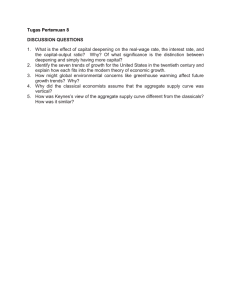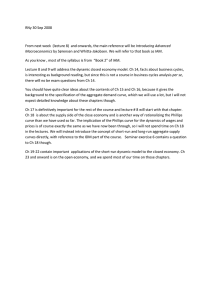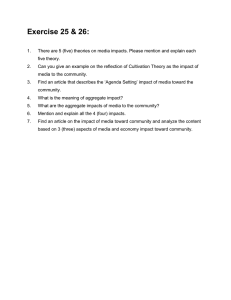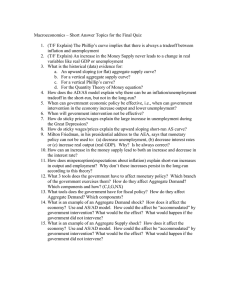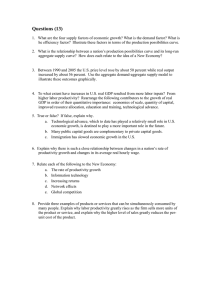On the graph above, stagflation will be caused by a
advertisement
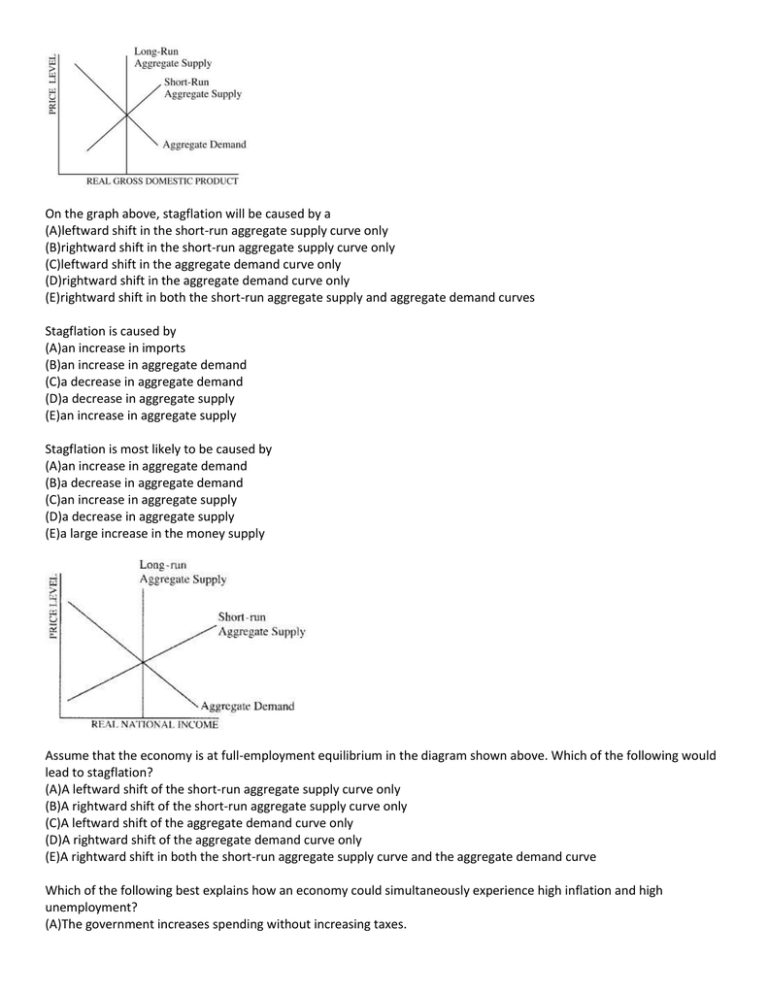
On the graph above, stagflation will be caused by a (A)leftward shift in the short-run aggregate supply curve only (B)rightward shift in the short-run aggregate supply curve only (C)leftward shift in the aggregate demand curve only (D)rightward shift in the aggregate demand curve only (E)rightward shift in both the short-run aggregate supply and aggregate demand curves Stagflation is caused by (A)an increase in imports (B)an increase in aggregate demand (C)a decrease in aggregate demand (D)a decrease in aggregate supply (E)an increase in aggregate supply Stagflation is most likely to be caused by (A)an increase in aggregate demand (B)a decrease in aggregate demand (C)an increase in aggregate supply (D)a decrease in aggregate supply (E)a large increase in the money supply Assume that the economy is at full-employment equilibrium in the diagram shown above. Which of the following would lead to stagflation? (A)A leftward shift of the short-run aggregate supply curve only (B)A rightward shift of the short-run aggregate supply curve only (C)A leftward shift of the aggregate demand curve only (D)A rightward shift of the aggregate demand curve only (E)A rightward shift in both the short-run aggregate supply curve and the aggregate demand curve Which of the following best explains how an economy could simultaneously experience high inflation and high unemployment? (A)The government increases spending without increasing taxes. (B)The government increases taxes without increasing spending. (C)Inflationary expectations decline. (D)Women and teen-agers stay out of the labor force. (E)Negative supply shocks cause factor prices to increase. Which of the following changes in the aggregate demand and aggregate supply curves is likely to result in stagflation? (A)The aggregate demand curve shifts to the left when the economy is in the classical range of the aggregate supply curve. (B)The aggregate demand curve shifts to the right when the economy is in the classical range of the aggregate supply curve. (C)The aggregate demand curve shifts to the right when the economy is in the Keynesian range of the aggregate supply curve. (D)The aggregate supply curve shifts to the left. (E)The aggregate supply curve shifts to the right. Which of the following would generate cost-push inflation? (A)An increase in the price of labor (B)A decrease in the price of energy (C)An increase in household consumption (D)A decrease in government spending (E)An increase in the money supply Which of the following is most likely to be caused by an adverse supply shock? (A)Structural unemployment (B)Frictional unemployment (C)Demand-pull inflation (D)Cost-push inflation (E)Deflation
